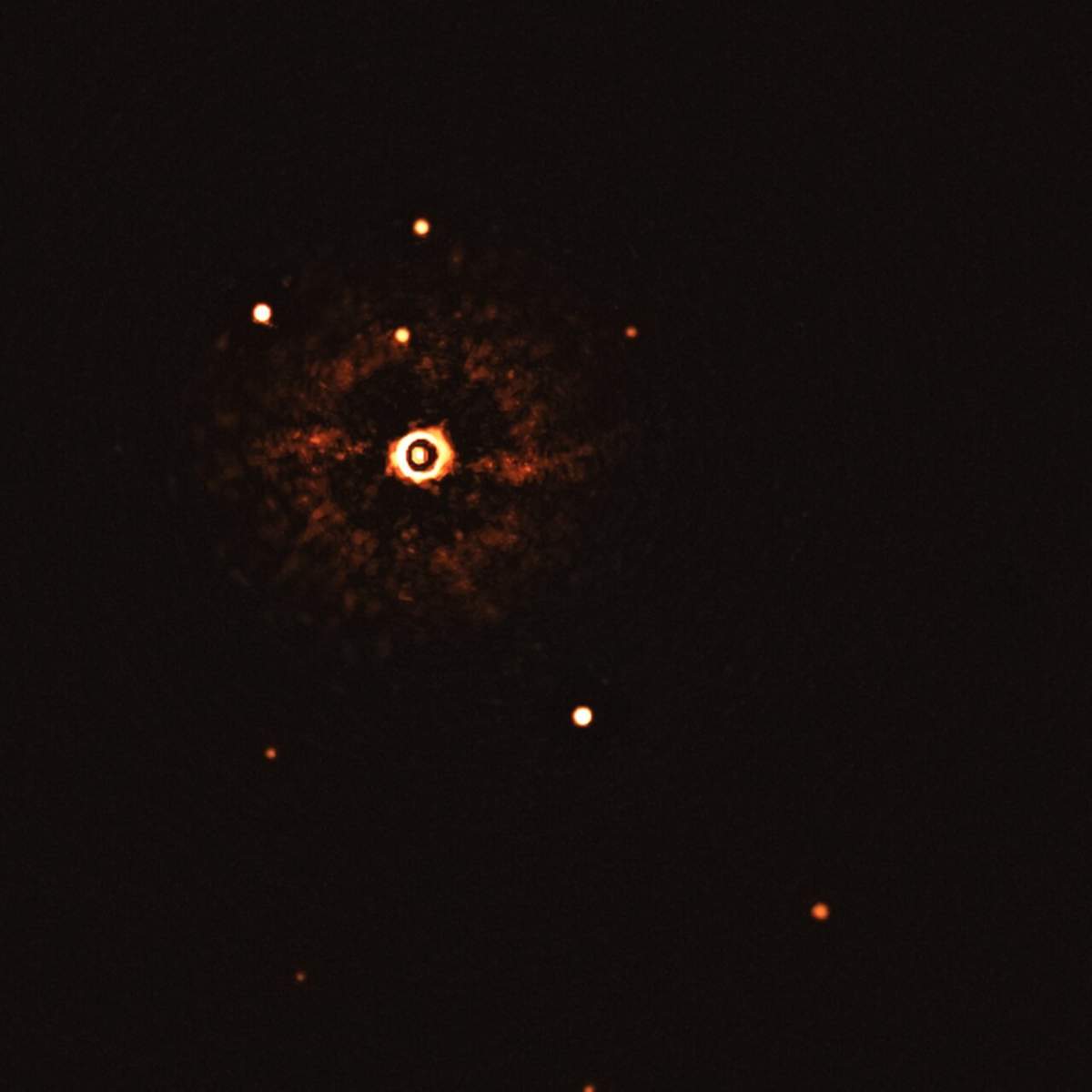A Chile-based telescope has captured the first-ever image of two planets in orbit around a distant star much like our own.

The striking image shows the star blazing bright yellow, with its two planets visible as pinpoints of light orange in the lower-left area of the frame. The star almost looks like the fiery eye of Sauron from Lord of the Rings.
“This discovery is a snapshot of an environment that is very similar to our solar system, but at a much earlier stage in its evolution,” Leiden University PhD student Alexander Bohn said in a statement released by the European Southern Observatory (ESO). Bohn is also the lead author of a paper announcing the photo, which appears in the latest edition of the Astrophysical Journal Letters.
Astronomers have identified thousands of far-away planets — called exoplanets — in orbit around distant stars over the years, but this is the first time they’ve photographed two around a star like our own. Telescopes typically identify an exoplanet by spotting the faint shadow it creates when it passes in front of a star, and faint shadows don’t make for good photographs.

Get daily National news
The ESO captured its photograph through the aptly-named Very Large Telescope (VLT), which can look across vast distances in space.
The star system is roughly 300 light-years away and the planets are both gas giants like Jupiter or Saturn, the ESO says. The two exoplanets are about 160 and 320 times farther from their star than the Earth is from the sun.
Bohn described the star as a “very young version of our own sun.” The distant star is a youthful 17 million years old, making it a baby compared to our own sun, which has been around for about 4.6 billion years.
The telescope captured the photo using a special instrument called the SPHERE, which filters out light from other sources so it can narrow in on an area of space. The same instrument was used to capture the first-ever direct photo of an exoplanet back in 2004.
Researchers have only captured direct photographs of a few dozen exoplanets to date, according to the NASA Exoplanet Archive.
The ESO team was hunting for young stars when they found this particular one and its planets, according to the paper. The researchers say TYC 8998-760-1 is an “excellent system” for follow-up analysis, because the two gas giants are nicely spaced out.
Bohn hopes the photo will help astronomers find more distant planets, including smaller ones with hard surfaces and the potential for life.
Perhaps those efforts will take off when the Very Large Telescope’s successor comes online. It’s being called the Extremely Large Telescope, because of course.
“The possibility that future instruments, such as those available on the ELT, will be able to detect even lower-mass planets around this star marks an important milestone in understanding multiplanet systems, with potential implications for the history of our own solar system,” Bohn said.





Comments